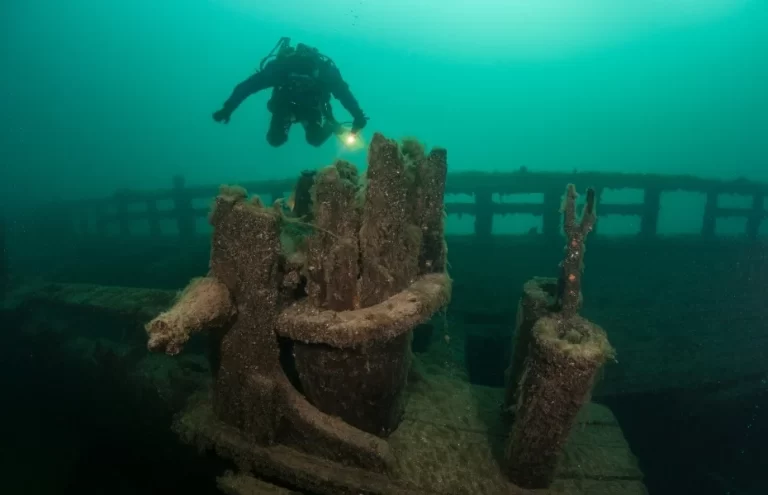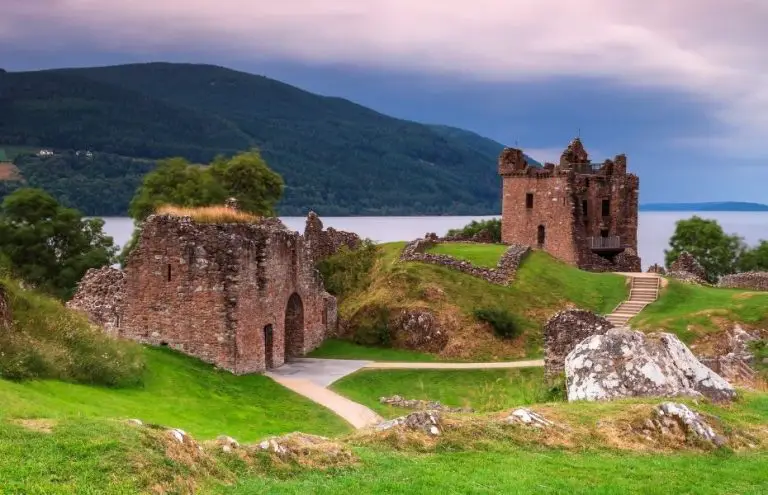This post contains affiliate links. If you click and purchase, we may earn a small referral fee at no extra cost to you. Read our full disclosure.
The Great Salt Lake of Utah is geographical masterpiece that offers travelers so much to discover and explore.
A visit here will delight you with breathtaking scenery, turquoise water and opportunities for outdoor adventure such as swimming, boating, sailing, kayaking, wildlife watching, hiking and mountain biking.
Plus, there are plenty of affordable options for lodging, including some incredible vacation rental properties at the lake and in nearby Salt Lake City, Ogden and Provo.
- Great Salt Lake things to do
- Great Salt Lake house rentals and hotels
- Great Salt Lake amazing facts and figures
- How was the Great Salt Lake formed?
- How salty is the Great Salt Lake?
- Pink Floyd: The lake's famous flamingo
- Why the Great Salt Lake appears to be two different colors
- Salt Lake City area history and economy
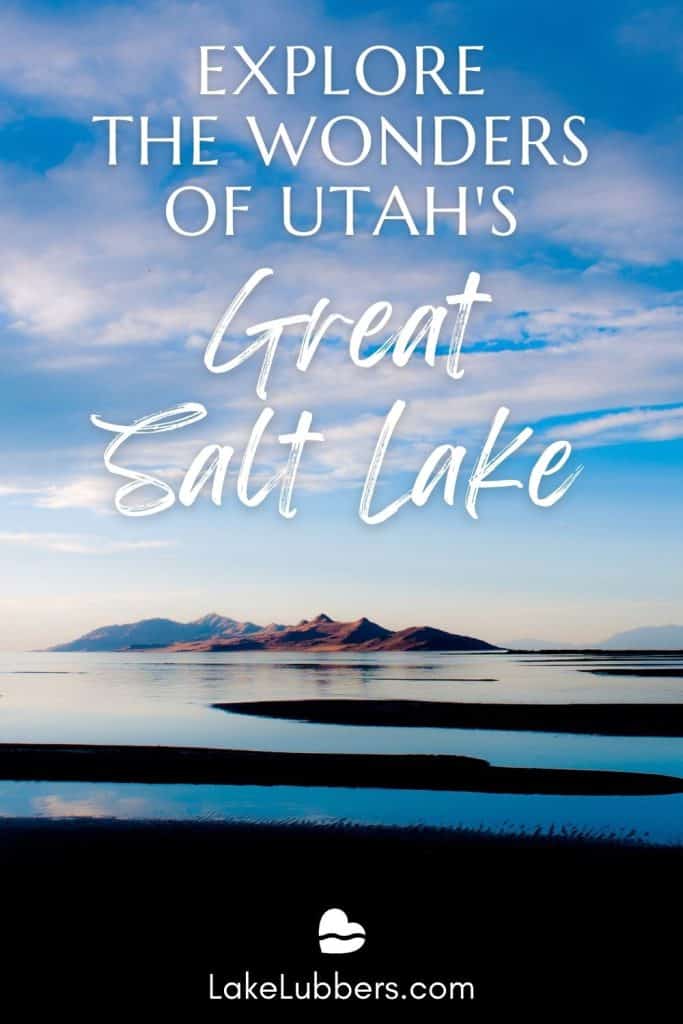
Great Salt Lake things to do
The lake itself is a marvelous tourist attraction inviting sightseers, boaters, and swimmers to this giant lake in the desert but development is tricky due to the on-going fluctuation of lake levels.
Hiking and biking trails along the shorelines and on the eight islands in the lake provide recreational opportunities regardless of lake level. Bird watchers and other wildlife enthusiasts can enjoy the sights without worry about lake levels, too.

Be sure to visit Antelope Island State Park to enjoy spectacular scenery, clean beaches, hiking, biking, horseback riding, a visitor center, marina, historic ranch house, camping and wildlife watching (including bison, mule deer, bighorn sheep and, of course, antelope).
Recent environmental changes have put a strain on the Great Salt Lake and its inhabitants. You can help save the lake just by paying Antelope Island a visit.
One lakeside development that has seen success in several incarnations since its completion in 1893 is Saltair, once a resort complete with beaches and boardwalks and the largest dance floor in the world. It’s now used as a concert venue.
Explore more amazing things to do near Great Salt Lake.

Great Salt Lake house rentals and hotels
Use this interactive map to search for and compare multiple properties at a glance, then quickly book lake house rentals and hotels with ease. Simply click on a listing to compare similar properties, best rates and availability for your dates.

Great Salt Lake amazing facts and figures
The Great Salt Lake is the largest lake of salt water in the western hemisphere and the 37th largest of all lakes on Earth. It’s often referred to as “America’s Dead Sea.”
The lake’s surface area fluctuates dramatically according to precipitation levels, with 950 square miles in 2021 holding the record for its lowest mark and 1987’s 3,300 square miles its highest.
Fluctuations in size are so significant because the lake is very shallow for such a large body of water. It’s maximum depth, in 1987, was 45 feet but the low, in 2021, was only 24 feet. For practical purposes, the lake’s average depth is 33 feet and average surface area is 1,700 square miles. Lakes that fluctuate this way are called pluvial lakes.
The lake is situated east of the Bonneville Salt Flats, a part of the Great Salt Lake Desert in the northern panhandle area of Utah.
The cities of Ogden and Salt Lake City are near its eastern shoreline and two interstate highways run roughly parallel to its western and southern borders, intersecting in Salt Lake City, nicknamed the Crossroad to the West.
The lake is roughly 75 miles long and 28 miles wide but fluctuating water levels cause these dimensions to vary.
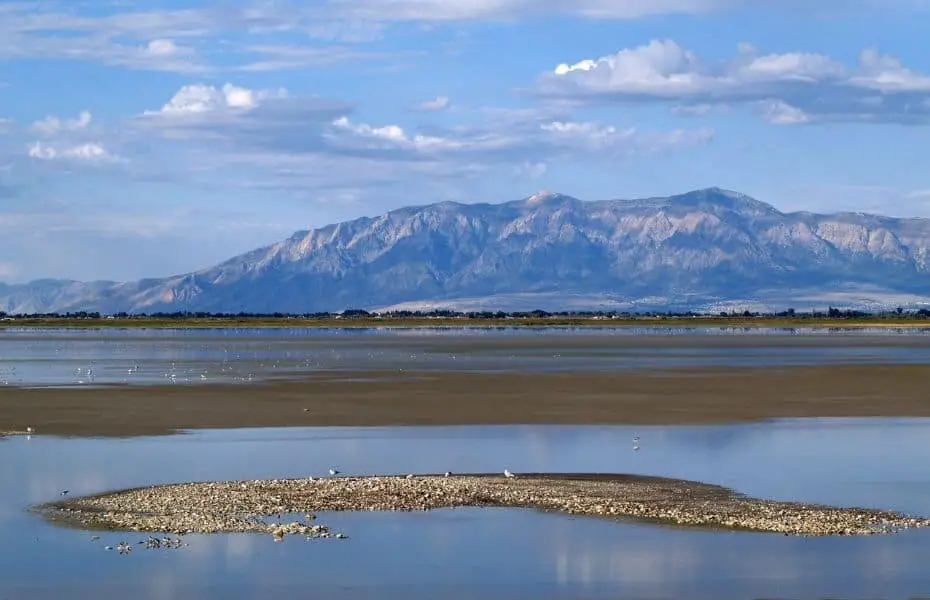

How was the Great Salt Lake formed?
The Great Salt Lake is the only remaining element of the prehistoric Lake Bonneville, which covered most of the current state of Utah during the Pleistocene epoch. The lake is thought to have formed about 32,000 years ago but geologic evidence suggests the area held as many as 28 lakes over 3 million years.
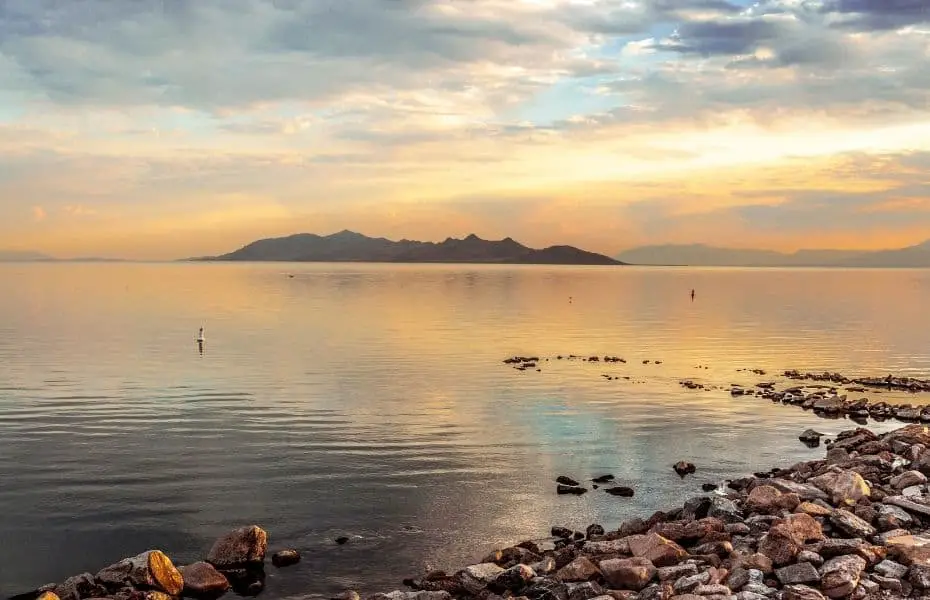
Each of these lakes would have been endorheic, relying almost entirely upon evaporation for drainage until each lake evaporated entirely. Lake Bonneville extended into modern-day Idaho and Nevada, stretching as much as 22,400 square miles, making it almost as large as today’s Lake Michigan, and it was more than 1,000 feet deep.
On its northern end, Lake Bonneville was bordered by dolomite, limestone, and shale, all rather soft, porous rocks, that gave way after lava flows destabilized the rock formation.
When this rock barrier suddenly shattered, sometime around 15,000 years ago, the waters from Lake Bonneville were released and diverted into the Snake River Plain and on to the Pacific Ocean.
Floodwaters were so tremendous in volume and strength that 15 million cubic feet of water per second are thought to have traveled as fast as 16 miles per hour for days on end, until most of the lake was drained.
After this catastrophic flood, the only water remaining in the North America Great Basin was that of today’s Great Salt Lake.

How salty is the Great Salt Lake?
The three rivers that feed the Great Salt Lake – the Bear, Jordan, and Weber – bring as much as 1.1 million tons of minerals into the lake each year.
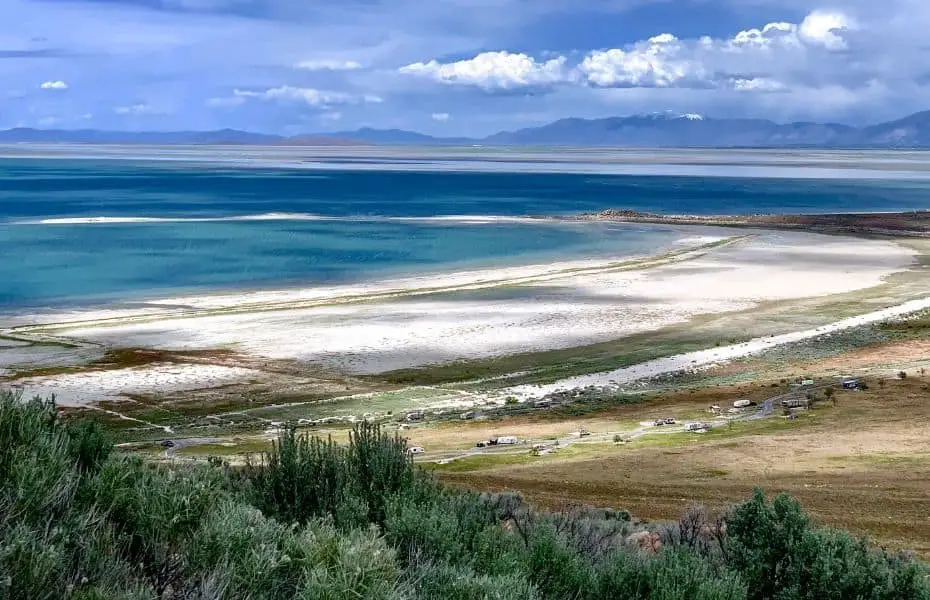
These rivers carry fresh water but all water contains trace elements of the rocks from which it originates and over which it passes as it flows to its termination. For these rivers, their terminal point is the Great Salt Lake.
Once the fresh water reaches the lake, water evaporates and the minerals are left behind, making the remaining lake water ever saltier as time passes.
The lake is considered a hypersaline lake, meaning it is even saltier than sea water, which contains 31.5 grams of mineral salts for every liter of water, or 3.5%. The mineral content of the lake’s waters fluctuates with depth and surface level, ranging from 5% to 27%.
In comparison, the Dead Sea, another hypersaline endorheic lake is 30.4% saline. One interesting effect of hypersalinity is that swimmers cannot sink in water that is so dense.

Pink Floyd: The lake’s famous flamingo
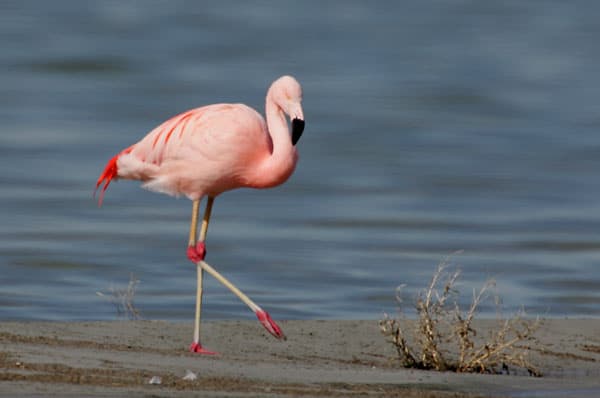
The most famous animal associated with the Great Salt Lake is Pink Floyd, a Chilean flamingo that escaped from a nearby aviary in 1988.
He returned after migration every winter to dine on brine shrimp from the lake and intermingle with its gulls and swans but he hasn’t returned since the 2005 migration, when he was last spotted in Idaho. However, he was immortalized on a mural in downtown Salt Lake City in 2021.
The hypersalinity of the lake makes it inhospitable for fish, amphibians and many of the plants common to freshwater lakes. Brine shrimp and the microorganisms they feed on are abundant and attract shore and water fowl that eat the shrimp and predators that feed on the birds.

Why the Great Salt Lake appears to be two different colors
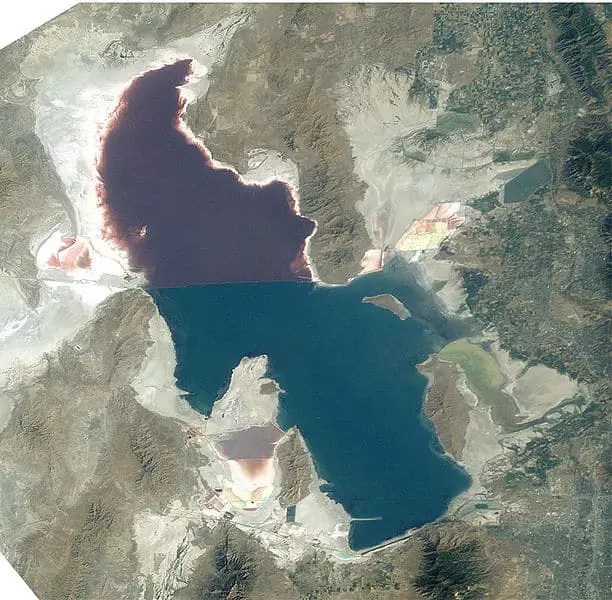
From the air, the Great Salt Lake appears to be two different colors separated distinctly across the middle.
An almost-solid railroad line runs east/west across the lake, impeding free flow of water from the north and south sections of the lake.
The northwestern arm of the lake, called Gunnison Bay, is considerably more salty than the remaining lake. Different microorganisms live in the saltier water than elsewhere. These microbes make the water appear a different color when seen from airplanes and space ships.

Salt Lake City area history and economy
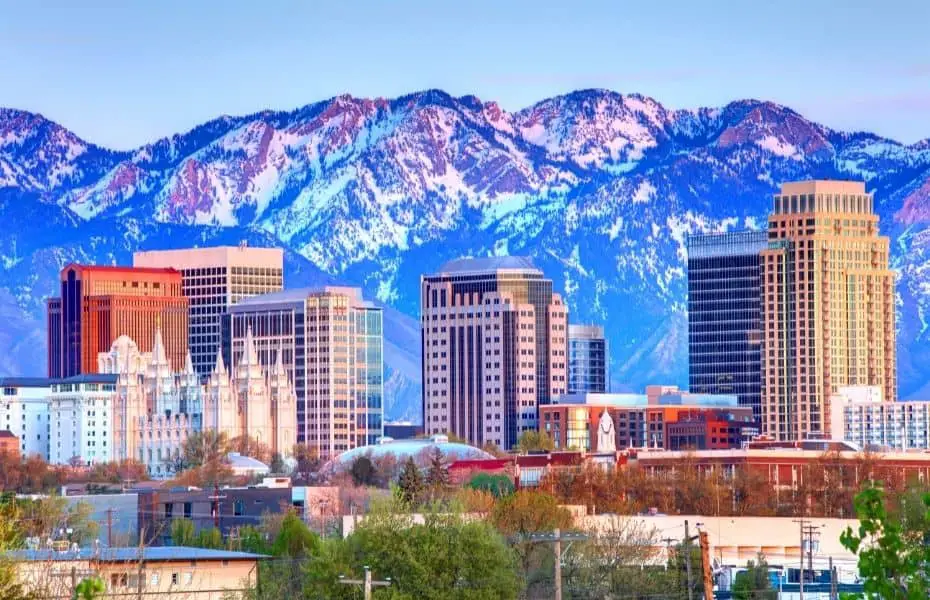
Salt Lake City sits just off the southeast shore of the lake. The city itself is home to approximately 200,000 residents but the metro area population is more than 1.2 million according to data from 2020.
This largest Utah city, host of the 2002 Olympic Winter Games, enjoys a service-oriented economy where many Salt Lakers are employed in the professional and business services as well as in trade, utilities, transportation, and government.
Founded by Mormon pioneers in 1847, the city is headquarters for the Church of Jesus Christ of Latter-Day Saints (LDS) and church members account for 53% of the city’s population.

The Great Lakes: Cool Facts and Figures for Kids (and Adults!)
The Great Lakes consist of five lakes (plus a smaller attached one named Lake St. Clair) that are all located in the same area of North America, specifically in the mid-upper area…

